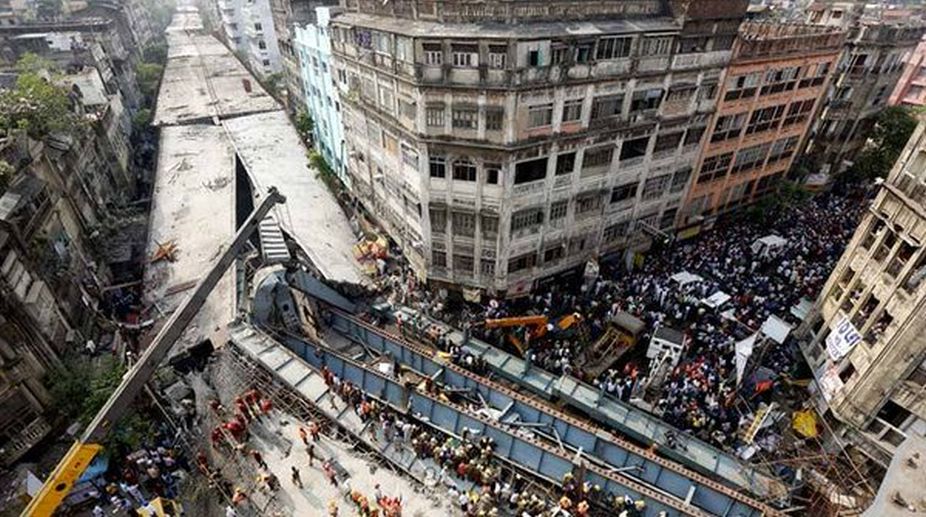Fire breaks out in Taratala, 30 shanties affected
A major fire broke out in the Taratala police station area of Kolkata on Monday night, engulfing around 30 shanties of KPT Colony.

Representational Image (PHOTO: Twitter)
A year after an under-construction flyover collapsed here snuffing out 27 lives and injuring over a hundred, despair and dread still stalk residents living within kissing distance of the remaining structure.
On March 31, 2016, around 12.30 pm the world came crashing down for hundreds of commuters and residents of Ganesh Talkies in north Kolkata where the partly-built flyover was winding its way through.
Advertisement
A 100-metre portion of the flyover, wedged between old buildings, sheared off and collapsed, flattening vehicles and trapping over a hundred people underneath it, triggering a political slugfest over corruption in the then assembly poll-bound West Bengal.
Advertisement
Over the past one year, the police have arrested engineers from Hyderabad-based construction company IVRCL — responsible for constructing the Vivekananda flyover — and two officials of the state-run Kolkata Metropolitan Development Authority (KMDA) that had been tasked with monitoring the project.
One also saw a series of ongoing scientific inspections, but a decision on what to do with the remnant bridge is yet to be taken.
A senior official of the construction company had claimed the disaster was "an act of God" which was swiftly dismissed by engineering experts, who pointed to the lack of proper planning, delays, lacunae in design and bad tendering as the major reasons for the tragedy.
In the aftermath, citizens united under the "Flyover Hatao Abhiyaan" have repeatedly protested against letting the structure remain there in a precarious position. They have been demanding demolition of the "murder bridge".
"What change? There is no change. Nobody came to check on us," said the widow of a shopkeeper killed in the incident.
"People still fear that the rest of it may collapse any second. Children go to school and people are scared of a second mishap," said Sanjay Somkar, a resident.
Somkar and his neighbours were the first ones to rush to the spot when the incident occurred, alerted by the thundering sound of the collapsing flyover.
Blood-spattered faces in pain, crushed limbs, slippers peeping out from beneath the fallen steel girders and debris, made for a ghastly site, as locals made a mad dash to extricate those still alive.
The Indian Army was pressed into service in addition to the National Disaster Response Force (NDRF).
Chaos reigned supreme as curious thousands poured into the narrow pocket of road, hampering rescue efforts.
West Bengal Chief Minister Mamata Banerjee, rushed to Kolkata after cancelling election rallies in West Midnapore district.
She announced compensation of Rs 5 lakh to the families of the dead, Rs 2 lakh each for the critically injured and Rs 1 lakh for those who suffered minor injuries.
The long-delayed 2.5-km flyover was expected to tackle congestion in the Burra Bazar area — the location of one of the largest wholesale markets in Asia — up to Howrah station, the gateway to the city.
The flyover's foundation was laid in 2008 (during the Left Front regime) and work on the Rs 164-crore project began on February 24, 2009.
It was scheduled to be ready in 2012 but land acquisition issues delayed completion. The implementing agency too ran into financial troubles.
Over 50 families living in buildings near the accident site were asked to vacate temporarily for the safe removal of collapsed debris.
Eviction notices were sent out to at least 10 families to vacate buildings on K.K. Tagore Street — right beneath the flyover. These buildings were earmarked as "vulnerable" and had to be demolished.
Most continue living under the flyover's shadow, hoping it will be brought down.
Advertisement